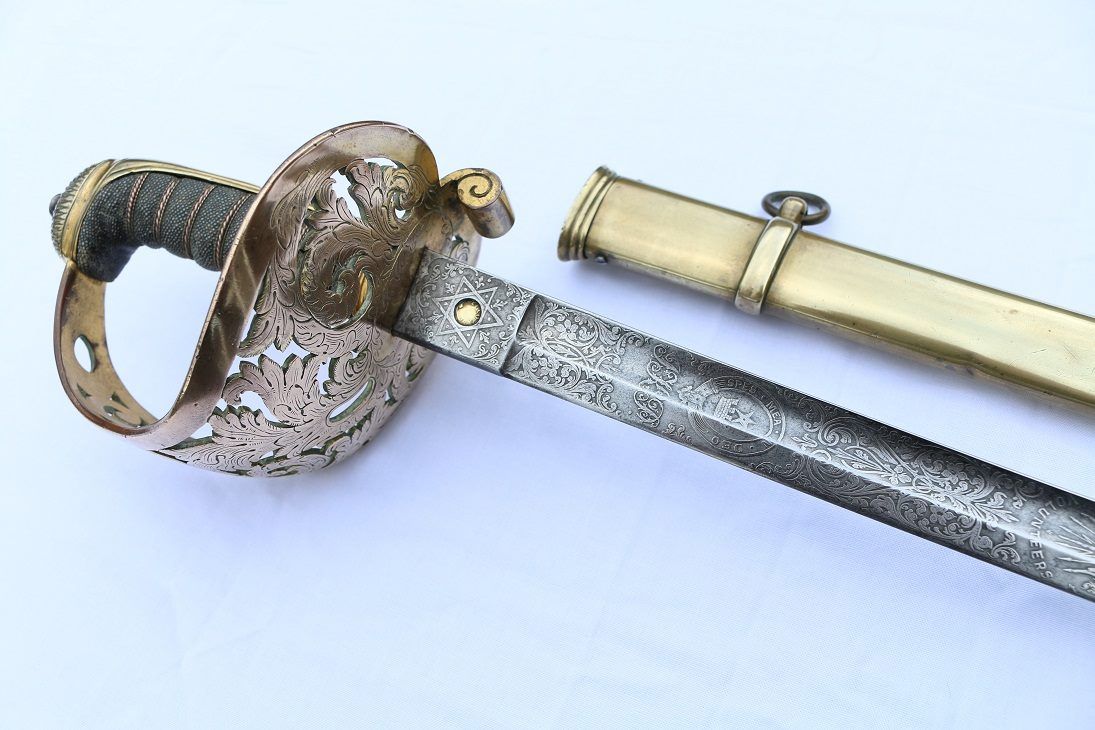Sword Advice for UK Police & Lawyers

I am an antique dealer, fencing instructor and developer of collectors' sword with various companies, TV/film, and a co-developer of the official replicas with the Royal Armouries.
Since the various updates to laws relating to swords, since 2008, I have been engaged in consulting with police, lawyers, the Home Office, antique dealers, auction houses and various other related parties.
I am being contacted increasingly frequently by police officers and lawyers who are navigating the current law, so I thought it would be useful to put this concise guide together.
I am required to state that this is not legal advice and I am not a legal professional. I am simply an ex-Civil Servant and expert in the field of swords and antique weapons, who has to work with the current law. I have provided reports on seized swords for various law firms and helped various police forces.
Police and law firms can contact me directly at scholagladiatoriachannel@gmail.com
What is and is NOT illegal
Under the so-called Samurai Sword Ban, only CURVED swords with blades over 50cm from hilt to blade point (measured in a straight line) are covered. Various exemptions and defences apply (see below).
I sympathize with UK police and lawyers who have to work with, enforce and navigate this rather complicated bit of law.
Curved swords are very regularly encountered, both as decorative objects, that many people didn't realise had become controlled under modern law, and as objects used legally in various businesses, sports and hobbies.
KEY POINTS FOR POLICE/Border Force:
- Straight swords are NOT prohibited
- Curved blades under 50cm from hilt to tip are NOT prohibited
- As of September 2024 BLUNT BLADES (eg. re-enactment, fencing or iaito) are NOT prohibited
- It is a legal defence to have curved swords for the purposes of sport (eg. fencing), martial arts, historical re-enactment, film making, theatre (proof of participation normally being shown by insurance document or club membership card)
- It is a legal defence for curved swords to be held for religious purposes (Sikhs primarily)
- It is a legal defence to ownership and trade if the curved sword is TRADITIONALLY MADE, by hand AND/OR with hand operated machines
- ANTIQUES (over 100 years old) are absolutely EXEMPT from this law. No antiques over 100 years old should be seized.
- 'Vintage' swords made before 1954 also have a legal defence
In the last few years I have seen a large number of swords seized which should not have been, including antiques, swords used for fencing and re-enactment, and straight swords. This is a waste of time and money for the police, Border Force and court services, as well as very stressful for law-abiding members of the public. Hopefully this guide helps.
How do police or lawyers know whether something is ANTIQUE or TRADITIONALLY MADE?
This is the tricky part and I really sympathize with police and lawyers.
Antiques - does it look old?
Some antiques are quite easy to tell, but many are not. Feel free to send a photo to an antique dealer like me, or another, and we will endeavor to let you know, or request a formal report. The majority of antique swords are curved, yet they are completely exempt from the Offensive Weapons Act and should NOT be seized.
If a person has an antique collection, or is a dealer/auctioneer, then in balance of probability most or all of the curved swords they have will be over 100 years old, and any that are more recent than that will be traditionally made.
Most swords are traditionally made, regardless of how much they cost or how modern they are. Value and age is NOT an indication of whether a sword is traditionally made by hand or not.
If the sword is a known make or model, hopefully the owner can show that and it can be verified as traditionally made. They might have a record of who/where it was purchased. For example, all Windlass swords, available from numerous websites, are traditionally made by hand and legal to own (see video linked below of the traditional hand making process at Windlass). Many other makes, such as LK Chen, Hanwei, Kingston Arms and Cold Steel, are also usually traditionally hand forged.
If none of this information is available, then an expert can inspect the sword, either with photos or in person and give an opinion.
Traditionally hand forged blades are usually carbon steel, but stainless steel and bronze swords can also be made traditionally by hand.
It will be quite difficult to demonstrate that a sword is NOT traditionally made by hand, as a very large percentage are.
My Services
I would prefer that my services in this field were not required, but it is clear from the number of requests that I get that they are.
I know that police budgets are tight and I want to help the police and innocent people, and so I provide a pro bono/free service for police, responding as quickly and helpfully as my schedule allows.
For law firms I do offer a report service for court cases. I can inspect seized weapons either in person or with photographs/video. In order to provide an expert report/assessment of the items I charge a flat fee of £250 per case (up to 10 seized items). If I have to travel somewhere to assess the items, then the travel and time fee is negotiable on a case by case basis.
You can contact me at scholagladiatoriachannel@gmail.com




